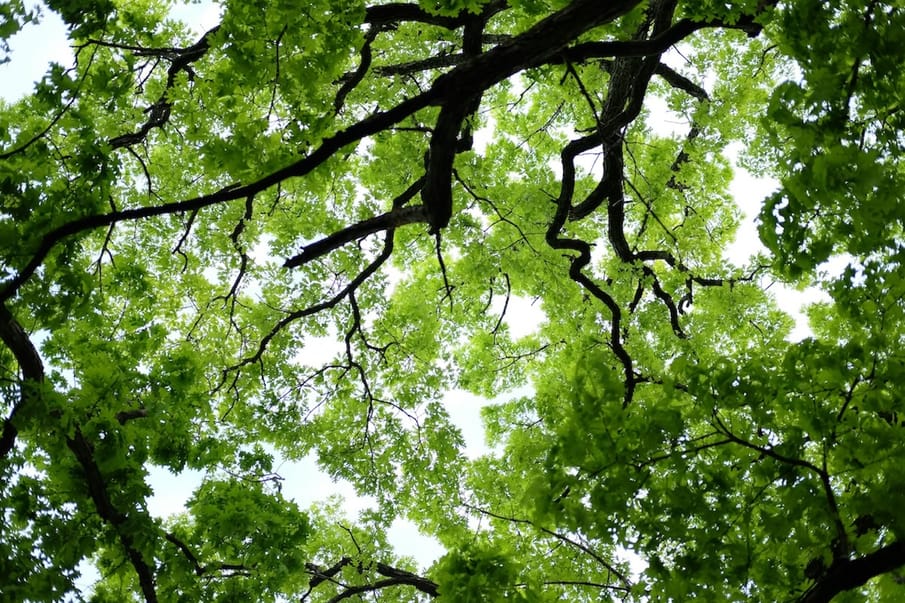After a garden showcasing the Japanese practice of forest bathing won the top prize at the RHS Chelsea Flower Show this year, we’re sharing the best ways to bring these benefits to your home
The RHS Chelsea Flower Show is one of the most prestigious events in Britain, taking place every year on the grounds of the Royal Hospital Chelsea. Every May, the grounds are transformed by a spectacle of blooms, and this year was no different. Providing inspiration for fellow green thumbs, the winner of the event’s ‘Best in Show’ took a more mindful approach, showcasing the benefits of immersing ourselves in nature.
The winner, first-time exhibitor Ula Maria, was inspired by the ancient Japanese practice of shinrin-yoku or ‘forest bathing.’ This mindfulness approach, which helps promote relaxation, has gained popularity in the UK in recent years. Thought to have a positive impact on our physical and mental wellbeing, forest bathing involves being calm and quiet amongst trees, tuning into the nature around you and breathing deeply. It’s about drawing attention to our senses as we walk amongst nature - observing the smaller details in the trees and listing to the gentle birdsong.
What are the benefits of forest bathing?
Intended to promote deep relaxation, forest bathing is thought to have numerous physical and mental benefits, such as:
- reducing stress and anxiety
- boosting mood
- lowering blood pressure
- increasing oxygen to the brain
- boosting our immune system
- improving attention
What’s more, Ula designed her garden for the charity, Muscular Dystrophy UK. She aimed to highlight how being immersed in nature could boost the mental health of people with the disease, which causes progressive weakening and degeneration of the muscles.
Whilst a wooded area might provide the most benefit from the surrounding trees, don’t let the name put you off. You can forest bathe just about anywhere in nature, including your own garden! Below are five ways to incorporate forest bathing elements into your outdoor space.
1. Go green
To bring a woodland feeling into your garden, it’s best to opt for greenery and foliage rather than colourful blooms. The colour green is said to be the most relaxing on the eye. It’s thought to bring tranquillity and is associated with growth and renewal, so it can be incredibly soothing. Plants such as ferns and succulents are a great option.
2. Visual variety
The RHS suggests using plenty of different patterns and shapes in a forest bathing garden to draw the eye. For example, using plants with contrasting leaf shapes, colours, patterns and textures. Ferns, again, are an easy way to bring variety. Try incorporating big-leafed plants that can add a level of drama such as elephant ears (Colocasia), textures from grasses and easy-to-maintain evergreens such as Buxus. Playing with dappled shade, where sunlight can filter through the branches of trees, will give your garden a forest feel. If you can, plant shade trees such as silver birches and acers or 'Japanese maple' (Acer palmatum) to create a canopy.
3. Tap into your other senses
Forest bathing is about tuning into all our senses, not just our sight. Consider how you might incorporate texture, smells and sounds into your garden.
Texture
Grasses and leafy plants planted next to seating areas allow you to brush your fingers through them. Doubling as a shady canopy and a textural haven, ornamental barks can be smooth to the touch, knotted or peeling.
Sound
Pause for a moment and listen. If your garden is a sanctuary for birds, can you identify the different birdsongs? As the wind picks up, can you hear the swaying of the branches and the rustling of the leaves? You may also wish to add a water feature as another sound medium.
Smells
Certain scents can promote relaxation and feelings of contentment. Trees release essential oils, known as phytoncides, which support wellbeing. Consider plant smells often used in aromatherapy such as cypress, cedar, rosemary and eucalyptus.
4. Add a seating area
Find whatever spot you’re most drawn to in your garden and create a space where you can allow yourself to be present for a few moments. You could opt for a chair, or you might want to consider a lounger if you have space so that you can look up at your tree canopy.
5. Add seasonal interest
In order to maximise the benefits of your garden all year round, pick trees and plants that provide interest with each season. As the name suggests, evergreen shrubs will stay green all year, but if you want to add pops of colour, the RHS suggests Hornbeam, Diablo shrubs and panicled Hydrangeas.
Combining the benefits of being outdoors with mindfulness, forest bathing is a trend that’s here to stay. Even if you don’t have a garden or outdoor space nearby, you can still experience the benefits of this practice. Find out more about how to benefit from plant power when you don’t have a garden on Happiful.


Comments